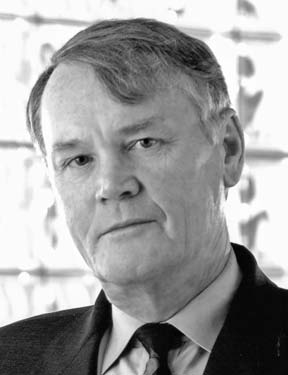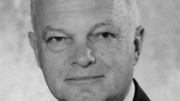The Canadian Mining Hall of Fame will induct four new members at its 21st annual dinner and induction ceremony being held Thursday, Jan. 15, 2009, at the Fairmont Royal York Hotel, in Toronto.
The inductees are Bernard Michel, Roman Shklanka, Grenville Thomas and Donald Gorman.
Tickets for the annual event are available from the Welcome/Upcoming events section on www.halloffame.mining.ca.For more information call 519-599- 3050 or visit the website.
Bernard M. Michel Born 1938
Bernard Michel has made profound and enduring contributions to Canada’s mining industry during his transformative 15-year tenure with Cameco Corp. Since 1988, he steered the Saskatchewan-based company through a merger, a restructuring, privatization, global expansion and diversification into gold. He positioned Cameco as one of the world’s few integrated nuclear energy companies, encouraged the entry of First Nations peoples into its workforce, and enhanced its global stature by participating in the most significant nuclear disarmament agreement in history.
Born and educated in Paris, France, and a graduate of the prestigious cole Polytechnique, Michel was sent to Canada as a young mining engineer in 1967 to contribute to the design, construction and startup of a large potash mine in Lanigan, Sask. He moved next to Frenchowned miner Amok, where he worked at the high-grade Cluff Lake uranium mine in the province’s Athabasca basin. His leadership and technical skills attracted the attention of the Canadian Energy and Mining Company (later renamed Cameco), which offered him the post of senior vice-president of operations in 1988. Two years later he became chief operating officer, president and a board member. In 1991, he was appointed chief executive officer, and in 1993 was elevated to chair of the board. In 1988, the company had inherited debt of $650 million and was saddled with the bureaucracy of federal and provincial crown ownership. Cameco was privatized in 1991, allowing Michel to restructure the company, create a more dynamic corporate culture, and expand its operations and global reach.
Under his tenure, Cameco remained consistently profitable in spite of years of depressed uranium prices. By 1998, the company was producing a third of the world’s uranium and had become a leading refiner and converter of uranium.
On the world stage, Michel oversaw Cameco’s participation in the 1999 agreement to facilitate, in partnership with the Russian and U. S. governments, the dismantling of 20,000 Russian nuclear warheads. The resulting uranium was purchased by Cameco and its partners, and resold to utilities, with a share of the proceeds used to fund further weapons dismantling.
Michel has won many awards for his visionary role in the uranium and nuclear energy industries, including the French Order of the Legion of Honour (1998), the Queen’s Jubilee Commemorative Medal (2002), the Saskatchewan Order of Merit (2004) and an honorary doctorate from the University of Saskatchewan.
Roman Shklanka has strengthened the prestige of Canada’s mining industry through his geological expertise and willingness to consider potential growth opportunities in diverse settings around the world. While educated and trained in Canada, he is known best for identifying quality projects in far-flung foreign lands and transforming them into world-class mines and deposits. He is one of only a handful of Canadian mining greats who have helped create immense mineral wealth on several continents, most notably for the benefit of developing nations.
Roman Shklanka Born 1932
Shklanka entered the University of Saskatchewan at the age of 15 and was awarded a BA in 1951, followed by a BCom degree in 1953. A summer job with the Saskatchewan Department of Mineral Resources inspired him to switch direction, and by 1956, he had earned an MA in geology. He went on to Stanford University and obtained his doctorate in 1963.
After gaining field and mapping experience with the Ontario Department of Mines, Shklanka joined Placer Development and managed exploration programs in Eastern Canada. In 1978, he was transferred to Australia, where he spent more than three years searching for new projects. After relocating to Placer’s Vancouver office to focus on Western Canada, Shklanka was promoted in 1985 to general manager of exploration and in 1987 to vice-president of foreign exploration, following the merger of Placer Development and Dome Mines.
Shklanka left Placer Dome in 1990 and merged his company with Sutton Resources, which successfully negotiated with the Tanzanian government to acquire Bulyanhulu following Placer Dome’s withdrawal. Subsequent drilling and underground development attracted Barrick Gold, which purchased Sutton for $525 million in 1999.
In 2003, Shklanka became chairman of Canico Resources Corp., which secured and advanced the Onca Puma nickel deposit in Brazil.
As one of the founders and chairman of Polaris Minerals, Shklanka saw the company begin operation in 2007 on Vancouver Island serving domestic and international markets, positioning it to become one of the major aggregate producers on the West Coast of North America.
Shklanka’s many successes reflect his early realization that geological risk is far higher than political risk in most parts of the world. His geological prowess, economics training and ability to process huge amounts of data quickly and effectively have helped many Canadianbased companies secure deposits and mines ahead of the competition, thereby enhancing Canada’s status as a centre of mining excellence.
Grenville Thomas Born 1941
Grenville Thomas left the Old World as a young mining engineer to become a pioneering prospector and company-builder in the New World, where he made a series of important mineral discoveries and contributed to the advancement of Canada’s fledgling diamond industry.
He began his career as a 16-year-old coal miner in his native Wales, moving to Canada after graduating from University College, Cardiff, in 1964. He found his calling in remote Northern Canada. Inspired by its vast, untapped mineral potential, he rose to the challenge of working in unforgiving terrain under extreme conditions. He honed his prospecting skills and over several decades built up a multifaceted track record of discovery, culminating with the early 1990s discovery of diamond deposits that ultimately became the world-class Diavik mine in the Northwest Territories.
Gren Thomas began his Canadian career with Falconbridge, taking posts in the Sudbury nickel camp of Ontario, and at the Giant gold mine in Yellowknife, N. W. T. He left Giant to form his own company specializing in N. W. T. mineral projects and spent time looking for nickel on the Arctic coast near Perry River. In 1975 he founded Highwood Resources to explore in the North, which led to the discovery of the Thor Lake rare metals deposit, now under development by Avalon Ventures.
In 1980, he formed his flagship junior company, Aber Resources, which subsequently discovered the Sunrise Lake massive sulphide deposits. In late 1991, Aber moved quickly to stake a large group of claims in the Lac de Gras region based on reports of a diamond discovery. The decision to stake surrounding ground at the onset of winter was a bold one, as Aber was cash-poor and the diamond discovery was widely considered to be a geological curiosity at the time. Thomas persevered, attracted global mining giant Rio Tinto as a joint-venture partner, and accelerated the race to find the next economic diamond deposit. Aber announced the first discovery on the Diavik property in 1992. By 1995, four economic diamond deposits had been discovered and with the support of Rio Tinto, Aber’s Diavik discoveries were developed into one of the world’s richest diamond mines, producing annually more than 10 million carats, worth an estimated $800-900 million. Diavik has also generated jobs and immense benefits for northerners, including aboriginal communities. Aber has now changed its name to Harry Winston Diamond to reflect its involvement in the luxury goods market.
Thomas’s discoveries and leadership role in advancing Canada’s diamond industry have won him many honours, including the PDAC’s Prospector of the Year Award for 1999. He continues to be active in Northern exploration through his involvement with Strongbow Exploration and North Arrow Minerals.
Donald H. Gorman Born 1922
Professor Donald Gorman has served the Canadian mining industry with distinction for more than half a century as a renowned mineralogist and superbly talented educator.
Born in Fredericton, he completed a bachelor of science degree in his native New Brunswick in 1947, after his studies were interrupted by wartime service in the Canadian Navy. After spending 1948-49 studying economic geology as a graduate student at the Royal School of Mines in London, England, he earned a PhD at the University of Toronto in 1957 and launched his teaching career.
“Digger” Gorman taught mineralogy with unflagging enthusiasm for the next 41 years, inspiring hundreds of geology and engineering students to pursue careers in mining and mineral exploration. He commanded respect in the classroom by exemplifying the two sides of science: on the one side, the rigorous analysis of minerals and their composition and significance; and on the other, the pleasure that comes from solving geological puzzles and discovering mineral treasure. To those he taught, minerals were not chemical formulae and crystal structures, but living things that tell a timeless story, shape history and spur human progress.
In addition to being a gifted educator, Gorman was a valued mentor to prospective mineralogists and geologists, a sought-after industry consultant and applied researcher, and an entertaining advocate for his science at popular public events. For decades he was the star attraction at mineral and gem shows, such as the Bancroft Gemboree, where novice rockhounds and experienced prospectors alike tried to stump the expert with countless obscure mineral specimens. He was a popular lecturer at the Royal Ontario Museum and the Walker Mineralogical Club, the oldest mineral club in Canada, which named him its honorary president in 1981.
Gorman has received many awards for his fine teaching abilities and exemplary advancement of science, including the Peacock Prize for Mineralogy for 1976. In 1978, he was presented with the Ontario Confederation of University Faculty Association’s award for outstanding teaching. In 1981, the International Mineralogical Association approved the name gormanite for a newly discovered mineral. In 2004, he was included in the University of Toronto’s list of Great Teachers from the Past, a select group of only 96 former faculty members that includes only one other earth scientist.






Be the first to comment on "Four legends to join the Canadian Mining Hall of Fame"